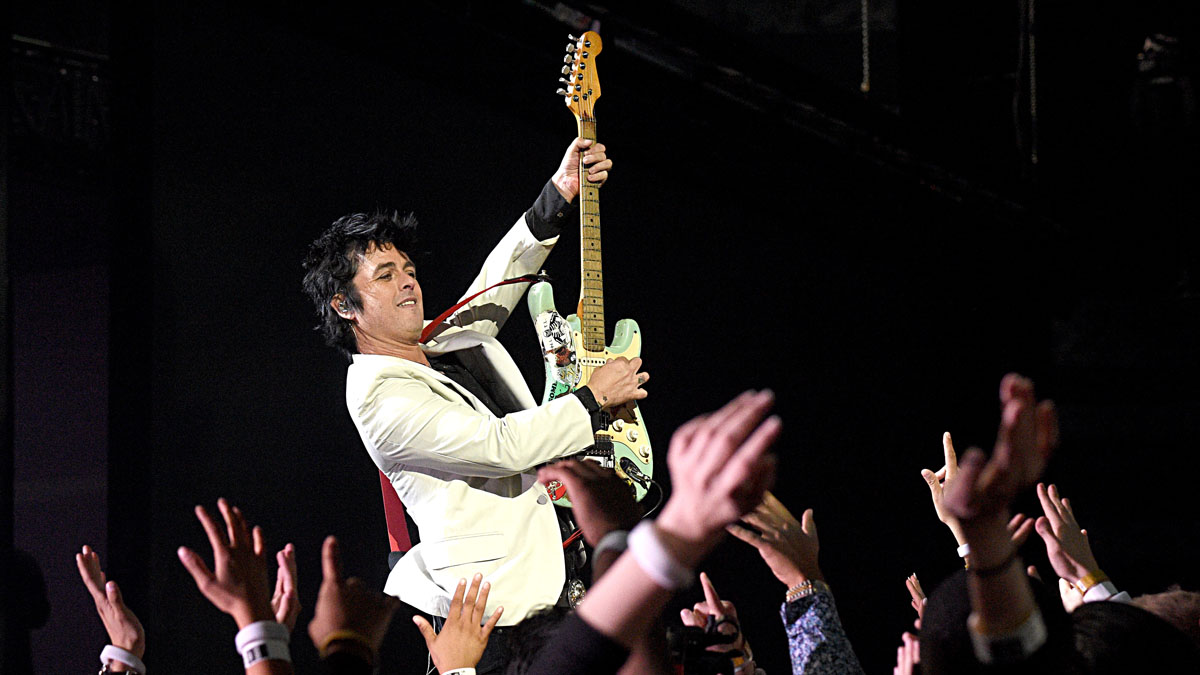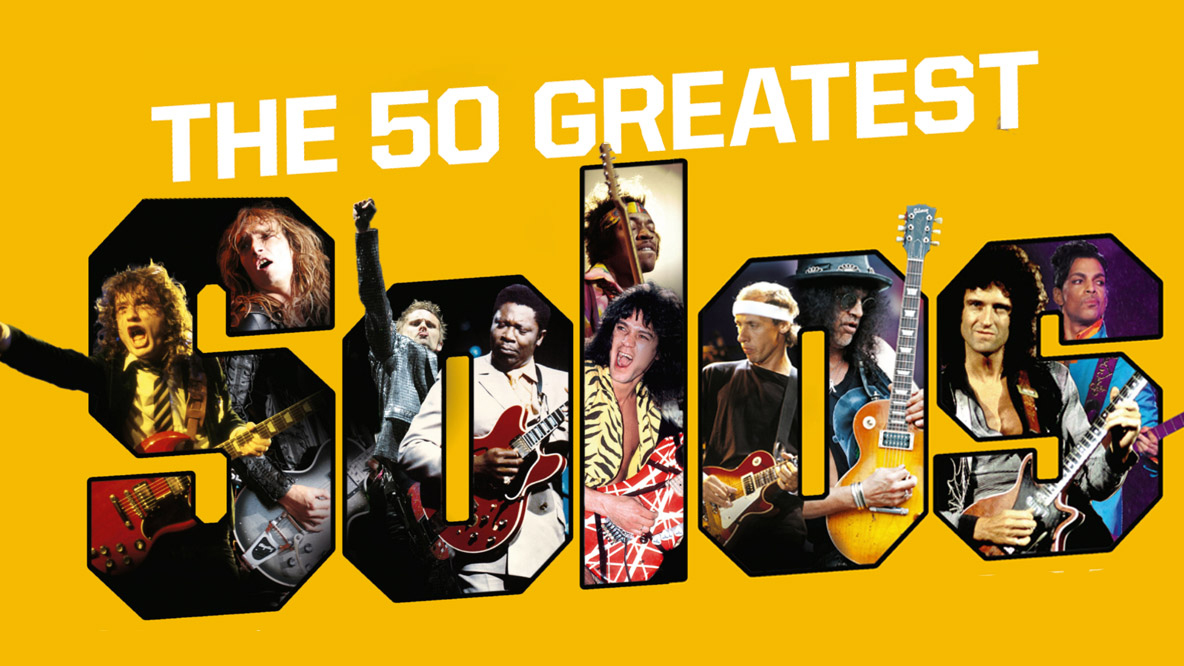Is the guitar solo dead in the 21st century?
Opinion: With guitar solos absent from the charts, Green Day championing the anti-solo and Eddie Van Halen gone, is it the end for the fret-melting guitar hero?

The guitar solo has been declared dead many times. Late-70s punks actively tried to kill it, bored by 20-minute stadium rock indulgences.

• The 50 greatest guitar solos of all time: the best lead playing ever committed to record, as voted by you
In the early 80s, some critics declared that the electric guitar itself was finished, replaced by the synthesizer. That prediction turned out comically wrong as the decade produced shred, Johnny Marr and a US alt-rock scene that went mainstream in the 90s.
In the 90s, according to critics, solos were facing the mortuary slab once more. This did not, however, stop them from appearing in the biggest alternative rock hits of the decade, such as Nirvana’s Smells Like Teen Spirit, Pearl Jam’s Alive, or even Weezer’s Buddy Holly.
Dying, it would appear, did little to deter the guitar solo. In the early 2000s, having recovered from nasty bouts of death in the preceding decades, solos again looked old hat.
Who could forget Kirk Hammett’s crestfallen face in Some Kind of Monster as his bandmates told him the new album would contain no solos? In the event, Metallica produced their most reviled work. Young bands like Trivium and Avenged Sevenfold promptly filled the vacuum, ripping out the kind of solos we wished had been on St Anger.
Now the guitar solo again looks ill-fated. Last year, Green Day’s Billie Joe Armstrong appeared on Total Guitar’s cover proclaiming the era of the anti-solo – going so far as to say, "I just feel like no one’s got the time to listen to a guitar solo anymore." A 2019 Rolling Stone editorial pondered the end of the era, pointing out that guitar solos on mainstream records are now vanishingly rare.
When Jack White collaborated with Beyoncé in 2016, arguably the 21st century equivalent of EVH teaming up with Michael Jackson, the resulting track didn’t even have a solo. After decades of crying wolf, have the guitar solo’s prophets of doom finally got it right?
Get The Pick Newsletter
All the latest guitar news, interviews, lessons, reviews, deals and more, direct to your inbox!
Even if reports of the guitar solo’s death have so far been greatly exaggerated, one day it will be gone. Maybe that day will be in 7.5 billion years, when the sun swallows Earth, or perhaps that day is upon us.
The first popular electric guitar went on sale in 1936. The Stratocaster is now old enough to collect its pension, and original Les Pauls are worth more than your house because they are virtually antiques. Many of the all-time great soloists are no longer with us: Van Halen, Hendrix, BB King, Chuck Berry, Dimebag, SRV.
Today, learning rock ’n’ roll means learning history. At the start of rock ’n’ roll, guitar solos were the sound of revolution, but it’s hard to think of them that way when the instruments themselves are older than your grandparents.
If you plugged in a guitar in 1952, virtually anything you played would have been an unprecedented new sound. Today you could play non-stop for a year without stumbling upon something that hasn’t been done. But it’s a mistake to think the guitar is a spent force, because you never know when a visionary will upset everything you think you know.
There’s a reason we think of Hendrix, Van Halen, and Tom Morello so vividly. Each arrived when we thought we had a handle on what guitars could do, and each shredded our preconceptions.
One day, maybe every variation of sound it’s possible to get from an electric guitar will have been made. But the electric guitar’s appeal has never been pure novelty, or it wouldn’t have had such a world changing first century.
The blues greats, who gave us the guitar solo as we know it, were famed for their emotional connection with the instrument. Lead guitar offers a raw form of expression, with musicians communicating their deepest feelings. That isn’t going away.
#GuitarSolo has 2.7 million posts on Instagram and 207 million views on TikTok. Searching ‘guitar solo’ produces 50 million hits on YouTube. Clearly, guitar solos are alive. What they are not, however, is mainstream. It is hard to imagine Cardi B or Billie Eilish employing Nita Strauss for a face-melting modern equivalent of Beat It.
But worrying about this ignores two facts: first, electric guitar music has always been in the minority on the radio. Guitarists remember the 1980s as a halcyon decade, but from 1980-1989, not a single end-of-year UK chart topper featured a lead break.
Second, nothing is mainstream anymore. There’s no TV channel everyone watches, no radio station everyone listens to. There are a million Spotify playlists for new music, and no one is on all of them. The electric guitar is a minority interest, but so is owning a hamster. This does not mean that hamsters are dying out.
The only way to keep shred alive was to kill it and bring it back to life our own way
Scott LePage, Polyphia
When people proclaim the death of the solo, they mean it is over as a cultural force, that it will never again be the voice of youth. Kids in the 1960s loved rock ’n’ roll in part because their parents hated it. When your dad is encouraging you to take guitar lessons so you can learn Sweet Child O’ Mine, the vibe is not the same.
One band who recognises the need to shake things up is Polyphia. “The only way to keep shred alive was to kill it and bring it back to life our own way,” says guitarist Scott LePage. It’s this attitude that makes their music so fresh.
It’s a view shared by blues upstart Christone ‘Kingfish’ Ingram, who told us, “I can’t be the kid wonder forever. We’re all evolving, and I just want to keep playing and keep pushing forward.” Listening to the next generation of guitarists, you get no sense that there is nowhere left to go.
There’s one really good reason to think that guitar solos can still surprise us. Until now, the famous ones have been made almost exclusively by men, mostly from the US and UK.
It’s notable that some of the most exciting guitarists of today are women: Nita Strauss, Erja Lyytinen, and Yvette Young among them. The internet means that guitarists from more countries are coming to prominence as well, including Brazil’s Mateus Asato and Lari Basilio, Japan’s Ichika Nito, and Niger’s Mdou Moctar.
That increasing diversity means a bigger pool of ideas and more chances for new sounds to emerge. It would be arrogant to assume all the guitar’s possibilities have been explored when so far only a tiny slice of the population has even tried.
Growing diversity mean that we have to expand our ideas of what a ‘guitar solo’ sounds like. Yvette Young’s inventive breaks bear no resemblance to blues rock, but there’s no doubt they are dazzling pieces of solo guitar.

It’s telling that Yvette says she never listens to guitar music. “I only listen to bands and composers. My piano upbringing – the two-handed tapping I play, I approach the guitar just how I’d approach writing polyphony on a piano.” If you want innovative guitar music, you shouldn’t be surprised when the results don’t remind you of Eric Clapton.
Other cultures could introduce brand new sounds. In October 2020, users in Nepal were among the most likely to Google ‘guitar solo’. Nepalese music commonly uses microtones (pitches in between the frets). There is still miles of potential for guitar innovation.
One avenue for originality is actual solo guitar – unaccompanied pieces. Besides Eruption, almost all classic guitar ‘solos’ are played with bands. Innovators like Mateus Asato and Ichika make stunning compositions for guitar alone.
Without having to blend with other instruments, they are free to roam wherever they please, but they also have to find new ways to fill the space normally occupied by the rhythm section. And by becoming stars on social media, they’re also changing ideas about where we find guitar heroes. There’s also the possibility that we’re just looking in the wrong places.
When guitar solos disappear in one genre, they usually pop up in another. In the late 90s, the metal press wondered where all the guitar solos had gone, with Korn and Limp Bizkit playing as though their top three strings were missing.
Yet on 1999’s biggest single, Smooth, Carlos Santana barely stopped soloing long enough for Rob Thomas to get the lyrics out. Meanwhile in 2021, if guitar solos are out of vogue someone should have told country musicians.
More electric guitars have been sold in the last 12 months than ever before. There’s every reason to expect that one of those guitars has gone to the next Matt Bellamy or Yvette Young.
But more importantly, all of them have gone to people who will use the instrument to express themselves and make themselves happy. Ultimately, guitar solos come from rebellious subcultures, so it would be weird to care what anyone else thinks.
Do you still like guitar solos? Cool. Us too.
“It was tour, tour, tour. I had this moment where I was like, ‘What do I even want out of music?’”: Yvette Young’s fretboard wizardry was a wake-up call for modern guitar playing – but with her latest pivot, she’s making music to help emo kids go to sleep
“There are people who think it makes a big difference to the sound. Stevie always sounded the same whether it was rosewood or maple”: Jimmie Vaughan says your fretboard choice doesn’t matter – and SRV is his proof







![John Mayer and Bob Weir [left] of Dead & Company photographed against a grey background. Mayer wears a blue overshirt and has his signature Silver Sky on his shoulder. Weir wears grey and a bolo tie.](https://cdn.mos.cms.futurecdn.net/C6niSAybzVCHoYcpJ8ZZgE.jpg)

![A black-and-white action shot of Sergeant Thunderhoof perform live: [from left] Mark Sayer, Dan Flitcroft, Jim Camp and Josh Gallop](https://cdn.mos.cms.futurecdn.net/am3UhJbsxAE239XRRZ8zC8.jpg)
